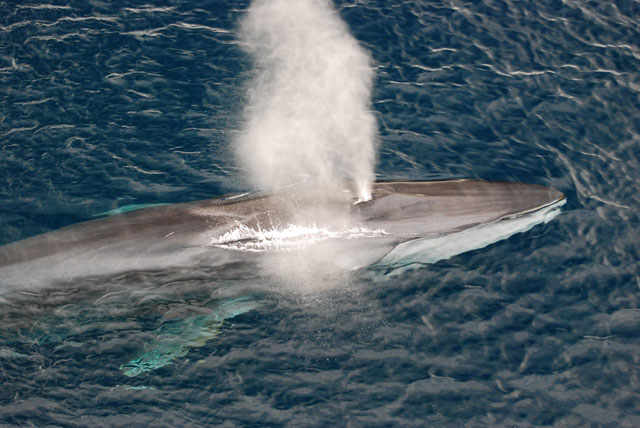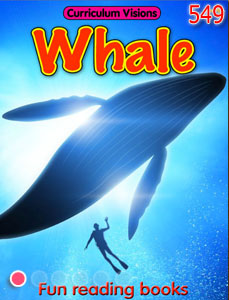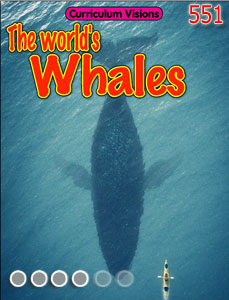Whale

A humpback whale.
Whales (which are related to dolphins and porpoises). All whales are mammals and so they breathe air. They live permanently in the world's oceans.
There are two different kind of whale. One kind have teeth – sperm whale, killer whale, pilot whale, and beluga whale – and so can catch and eat fish and other sea creatures. All other whales – humpback whale, blue whale, bowhead whale, minke whale and others – are filter feeders, and can only eat small ocean animals like krill, using a comb-like strainer in their mouths.
The 'arms' in whales have developed into fins. The nose has developed on the top of the head.
Whales vary greatly in size. The blue whale is the world's largest animal and is even larger than any of the dinosaurs. It is 30m long and weighs 180t. The smallest whales is the pygmy whale, just 3.5m long.
Whales typically live as long as humans, something between 70 and 100 years. Until there was a recent ban on hunting whales, their numbers had fallen dramatically, and so their chances of living a normal life were slim. Now their numbers are slowly growing again.




